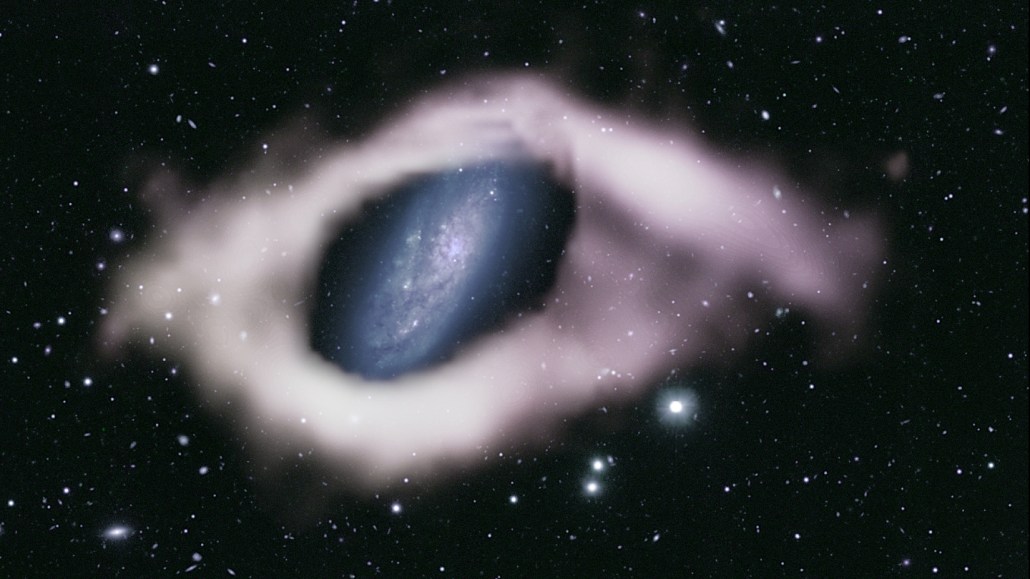This ‘polar ring’ galaxy looks like an eye. Others might be hiding in plain sight
Certain rings encircling galaxies might not be as rare as once thought

The starry disk of galaxy NGC 4632, shown in this composite image, is encircled by what’s probably a rare “polar ring” of mostly hydrogen gas visible only at radio wavelengths.
N. Deg et al/Monthly Notices of the Royal Astronomical Society 2023